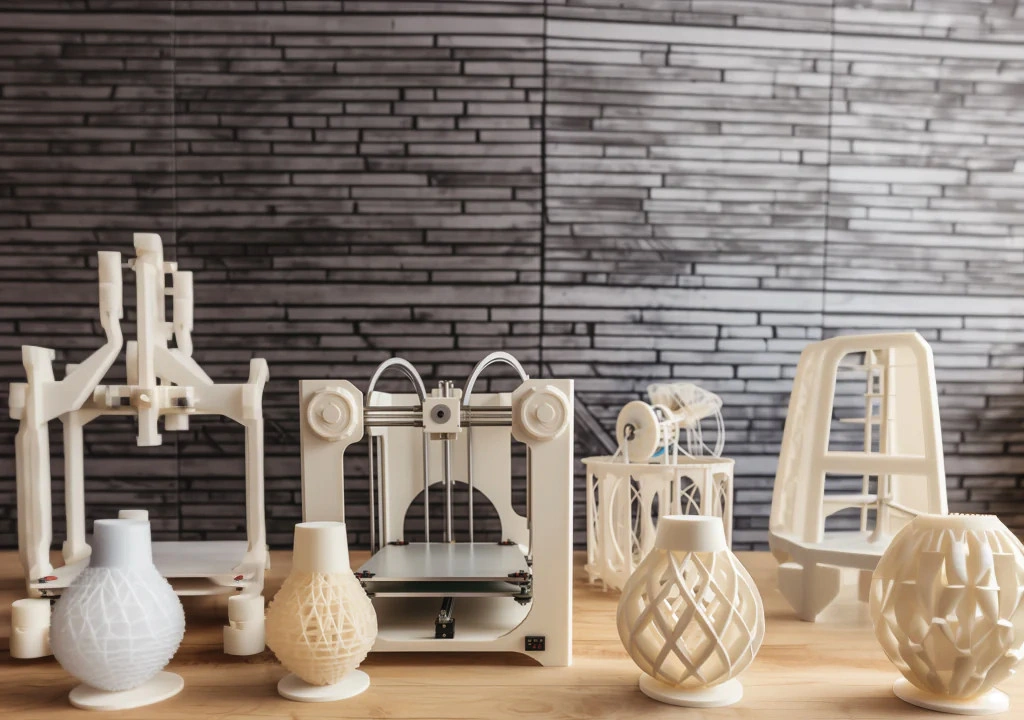
Blog
History of 3D Printing : From Concept to Reality
History of 3D Printing : From Concept to Reality
Today, 3D printing, or additive manufacturing, is a cornerstone of innovation across countless industries. But how did we get here? The journey from theoretical concept to the powerful reality we know today is a fascinating tale of ingenuity, perseverance, and technological breakthroughs. Let’s delve into the history of 3D printing, tracing its evolution from its nascent ideas to its current revolutionary impact.
Early Seeds: The Precursors to Modern 3D Printing (1960s-1970s)
While the term “3D printing” might seem modern, the underlying principles have roots further back than many realize. The idea of building objects layer by layer wasn’t entirely new.
Early developments in photo-sculpture and topographical mapping hinted at the potential of creating three-dimensional objects from sliced images. For instance, processes like producing “contour maps” in physical form laid some conceptual groundwork. These weren’t 3D printers as we know them, but they demonstrated a fascination with translating two-dimensional data into three-dimensional forms.
The Dawn of Additive Manufacturing: The 1980s Revolution
The 1980s marked the true beginning of what we recognize as 3D printing. This decade saw the invention of several foundational technologies:
-
1981: Hideo Kodama’s Contribution: Japanese researcher Hideo Kodama of Nagoya Municipal Industrial Research Institute is often credited with the first published account of a rapid prototyping system. He developed a method using photopolymers that were hardened by UV light, layer by layer, to create a solid model. While he didn’t patent his work, his research laid crucial groundwork.
-
1984: Charles “Chuck” Hull and Stereolithography (SLA): This is where the history of 3D printing truly takes a commercial turn. Chuck Hull, later co-founder of 3D Systems, invented stereolithography (SLA). He patented his “Apparatus for Production of Three-Dimensional Objects by Stereolithography” in 1986. This process used a UV laser to cure liquid photopolymer resins, building models layer by layer. Hull’s invention was groundbreaking and directly led to the establishment of the first 3D printing company.
-
1987: Carl Deckard and Selective Laser Sintering (SLS): While at the University of Texas at Austin, Carl Deckard developed and patented Selective Laser Sintering (SLS). This technique uses a laser to fuse powdered materials (like plastic, metal, or ceramic) together, layer by layer. SLS offered the ability to print with a wider range of engineering-grade materials, pushing the boundaries beyond just plastics.
-
1989: Scott Crump and Fused Deposition Modeling (FDM): Scott Crump, co-founder of Stratasys, invented Fused Deposition Modeling (FDM). He patented the process, which involves extruding a thermoplastic filament through a heated nozzle, depositing it layer by layer. FDM would later become the most common and accessible 3D printing technology for both industrial and consumer use.
These three pioneering technologies – SLA, SLS, and FDM – form the bedrock upon which nearly all modern 3D printing is built.
Expansion and Early Commercialization (1990s)
The 1990s saw these nascent technologies mature and become more commercially available, albeit at high costs and primarily for industrial prototyping.
-
Companies like 3D Systems, Stratasys, and EOS (which licensed SLS technology) began selling their first commercial machines.
-
Rapid Prototyping became the buzzword. Businesses could now quickly create physical models of new product designs, drastically reducing development cycles and costs. This was a monumental shift from traditional, time-consuming model-making.
-
New materials were developed, expanding the applications for these early printers.
The Rise of Accessibility and the Open-Source Movement (2000s)
The 2000s were transformative, ushering in a new era of accessibility and innovation.
-
Expiration of Key Patents: Crucially, many of the foundational patents (especially FDM) began to expire in the early to mid-2000s. This opened the floodgates for new companies and individuals to innovate without licensing restrictions.
-
RepRap Project (2005): The RepRap (Replicating Rapid Prototyper) project, founded by Dr. Adrian Bowyer, aimed to create a self-replicating 3D printer – a machine that could print most of its own parts. This open-source initiative dramatically lowered the barrier to entry, sparking the desktop 3D printer revolution.
-
Increased Affordability: With more competition and open-source designs, the cost of 3D printers plummeted. What was once a machine costing tens or hundreds of thousands of dollars began to be available for a few thousand, and eventually, hundreds.
This period truly democratized 3D printing, moving it from specialized labs into schools, small businesses, and even homes.
The Modern Era: Mainstream Adoption and Diverse Applications (2010s-Present)
The last decade has seen 3D printing explode into mainstream awareness, finding applications in virtually every sector:
-
Healthcare: Personalized prosthetics, dental aligners, surgical guides, and even bioprinting of tissues and organs.
-
Aerospace: Lightweight, complex parts for aircraft and spacecraft (e.g., General Electric’s LEAP engine fuel nozzles).
-
Automotive: Prototyping, tooling, and increasingly, end-use parts.
-
Construction: Printing entire houses and building components.
-
Consumer Goods: Custom footwear, jewelry, and personalized products.
-
Education: As a powerful tool for learning design, engineering, and manufacturing.
New materials, faster printing speeds, and even larger print volumes continue to push the boundaries of what’s possible. From its conceptual beginnings to a present where it’s reshaping manufacturing, the history of 3D printing is a testament to human innovation and a clear indicator that the future is being built, layer by layer, right before our eyes.
Want to learn more? Explore the extensive resources on additive manufacturing from leading institutions like Stanford University and discover the ongoing advancements.










